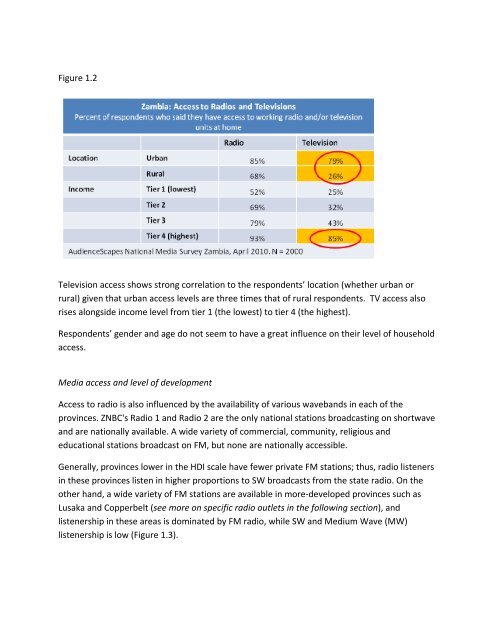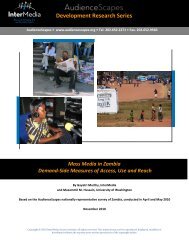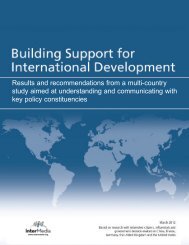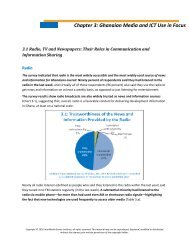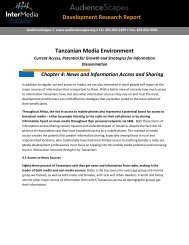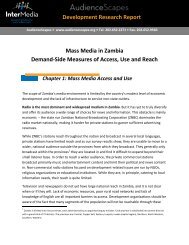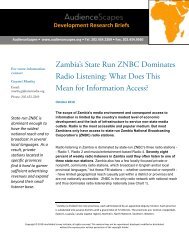Mass Media in Zambia Demand-Side Measures ... - AudienceScapes
Mass Media in Zambia Demand-Side Measures ... - AudienceScapes
Mass Media in Zambia Demand-Side Measures ... - AudienceScapes
You also want an ePaper? Increase the reach of your titles
YUMPU automatically turns print PDFs into web optimized ePapers that Google loves.
Figure 1.2Television access shows strong correlation to the respondents’ location (whether urban orrural) given that urban access levels are three times that of rural respondents. TV access alsorises alongside <strong>in</strong>come level from tier 1 (the lowest) to tier 4 (the highest).Respondents’ gender and age do not seem to have a great <strong>in</strong>fluence on their level of householdaccess.<strong>Media</strong> access and level of developmentAccess to radio is also <strong>in</strong>fluenced by the availability of various wavebands <strong>in</strong> each of theprov<strong>in</strong>ces. ZNBC's Radio 1 and Radio 2 are the only national stations broadcast<strong>in</strong>g on shortwaveand are nationally available. A wide variety of commercial, community, religious andeducational stations broadcast on FM, but none are nationally accessible.Generally, prov<strong>in</strong>ces lower <strong>in</strong> the HDI scale have fewer private FM stations; thus, radio listeners<strong>in</strong> these prov<strong>in</strong>ces listen <strong>in</strong> higher proportions to SW broadcasts from the state radio. On theother hand, a wide variety of FM stations are available <strong>in</strong> more‐developed prov<strong>in</strong>ces such asLusaka and Copperbelt (see more on specific radio outlets <strong>in</strong> the follow<strong>in</strong>g section), andlistenership <strong>in</strong> these areas is dom<strong>in</strong>ated by FM radio, while SW and Medium Wave (MW)listenership is low (Figure 1.3).


